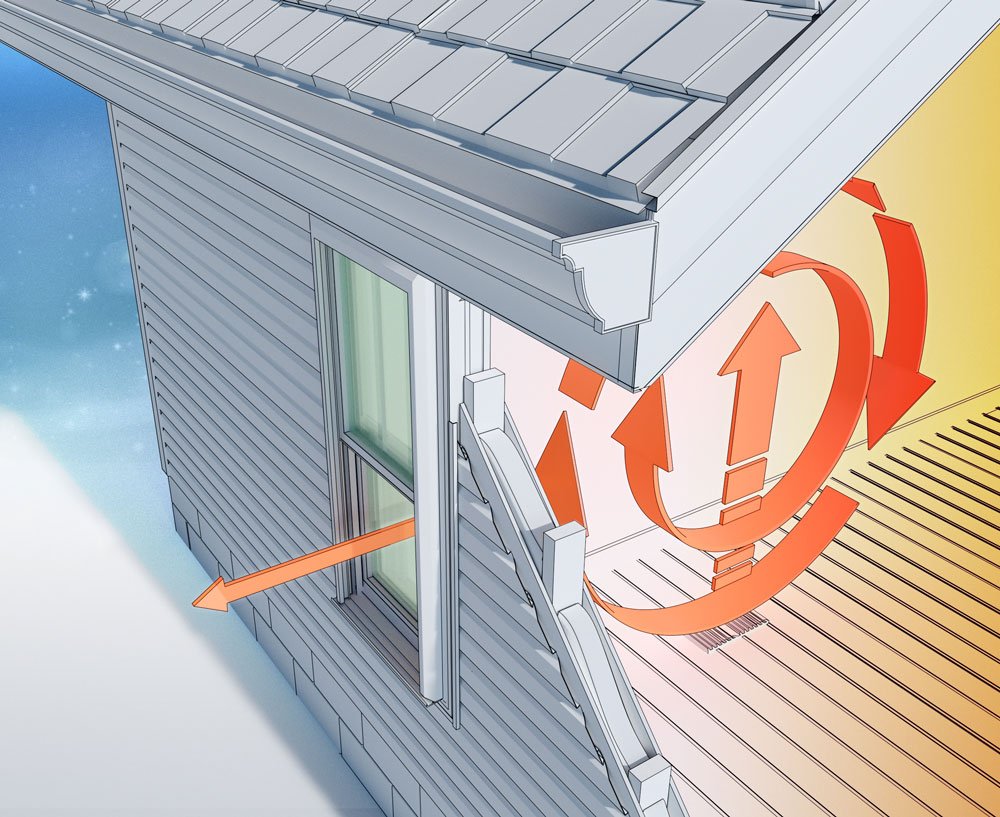Maximizing Comfort And Savings With Obsidian Windows: Why U-Factor Matters
Choosing the right windows for your home isn’t just about aesthetics; it’s also about making smart decisions for your comfort and wallet. One important factor to consider is the U-factor. But what is U-factor, and why is it so important?
In simple terms, the U-factor, sometimes also called U-value, measures how well a window prevents heat from escaping. The lower the U-factor, the better the window insulates, keeping warmth in during the winter and out during the summer without making your HVAC system work overtime. It helps maintain an ideal indoor environment while keeping energy bills low.
Why U-Factor Matters: Your Window’s Impact on Energy Efficiency
Why should you care about U-factor when choosing windows? The Twin Cities is known for its polarizing weather—from below-zero, snow-packed winters to hot and humid summers. So, having windows that keep your house in an ideal state without costing you a ton of money is key. Here’s why considering the U-factor when choosing windows matters:
Better Insulation: Windows with a low U-factor offer superior insulation. This means less heat loss during cold months and less heat gain during warm months.
Energy Savings: With less heat escaping or entering, your heating and cooling systems work more efficiently, significantly saving energy bills.
Enhanced Comfort: A well-insulated home maintains a stable temperature, minimizing drafts and hot or cold spots.
Think of it this way: your windows act as shields against the elements. With a high U-factor, your windows are weaker barriers, causing your home to lose heat more rapidly and making your heating system work harder for high costs. Conversely, windows with a low U-factor act as stronger barriers, reducing the heat exchange and keeping your home comfortable year-round at a lower price.
Finding the Right U-Factor for Your Climate
The ideal U-factor for your windows can depend significantly on your climate. Here’s a general guideline:
Colder Climates: In regions with long, cold winters, such as the Twin Cities and the northern United States, a lower U-factor is crucial to minimize heat loss. Look for windows with a U-factor of 0.25 or lower to ensure your home stays warm and your heating bills stay low.
Moderate Climates: A balance is needed for areas with mild winters and hot summers, like the mid-Atlantic or Pacific Northwest. Windows with a U-factor between 0.26 and 0.30 offer sound insulation for both heating and cooling efficiency.
Warmer Climates: In hot climates, like the southern United States, the focus shifts to preventing heat gain. While a lower U-factor is still beneficial, you might prioritize windows with better solar heat gain coefficients (SHGC) to reduce cooling costs. A U-factor around 0.30 or slightly higher can be adequate if paired with low SHGC.
Energy Star Most Efficient Certification: Setting The Gold Standard
At WindowLab, we are dedicated to delivering top-notch energy efficiency. Our Obsidian windows are not only Energy Star certified but also recognized as Energy Star Most Efficient 2024. This award highlights products with cutting-edge energy efficiency and the latest technological advancements.
Energy Star windows are rated based on their ability to maintain indoor temperatures and minimize energy use. The Energy Star Most Efficient label represents the pinnacle of energy performance, identifying the best of the best in energy savings.
To achieve this certification, windows must meet stringent criteria, including a U-factor of ≤ 0.20 for the northern climate zones. WindowLab’s Obsidian windows exceed these requirements, with a U-factor as low as 0.19. This makes them an excellent choice for homeowners or builders who value energy efficiency and want to keep their energy costs in check.
The Technology Behind WindowLab’s Obsidian Windows
What sets WindowLab's Obsidian windows apart is the advanced technology designed to enhance energy efficiency and insulation. Let’s take a closer look at the features that contribute to their low U-factor:
Foam Spacers for Superior Insulation: Unlike traditional metal spacers, foam spacers reduce the U-factor by minimizing thermal conductivity. This means that the edges of the windows, which are typically the weakest points in terms of insulation, remain as insulated as the rest of the windows. This contributes significantly to achieving a lower overall U-factor.
Triple-Pane Glass for Enhanced Performance: Obsidian windows feature three layers of glass separated by two insulating air spaces. This configuration provides better insulation compared to double or single-pane windows. The additional glass layers and air spaces help trap heat, preventing it from escaping your home in the winter and keeping it out in the summer.
Low-E Coatings for Energy Efficiency: Our windows also have Low-E (low-emissivity) coatings. These microscopically thin layers of metallic oxide reduce the amount of ultraviolet and infrared light that passes through the glass without compromising the amount of visible light. As a result, Low-E coatings help lower the U-factor and improve the overall energy efficiency of your windows.
Upgrade Your Home’s Windows Today
Choosing windows with a low U-factor is a smart investment for any homeowner or builder looking to improve energy efficiency and reduce utility costs. WindowLab’s Obsidian windows not only meet but exceed the highest standards for energy performance.
Obsidian windows represent the ultimate energy-efficient design with their Energy Star Most Efficient certification and advanced features like foam spacers, triple-pane glass, and Low-E coatings. Upgrade to WindowLab’s Obsidian windows by contacting us today and enjoy a more comfortable, cost-effective, and eco-friendly home.



